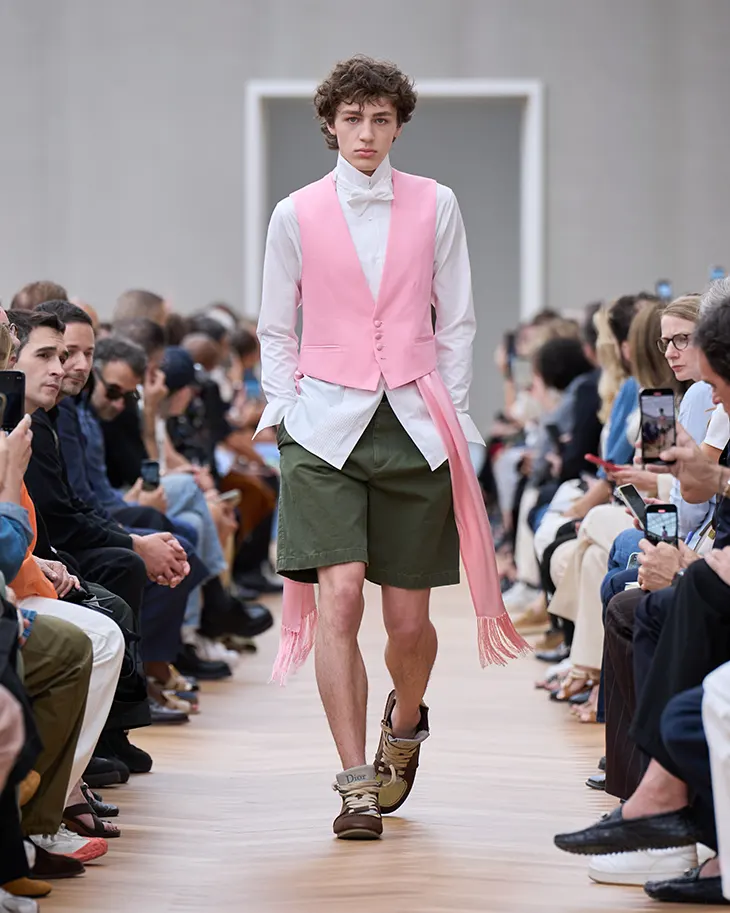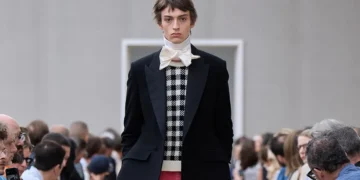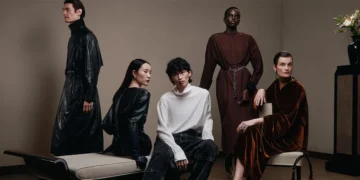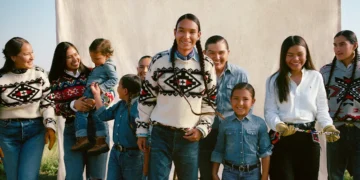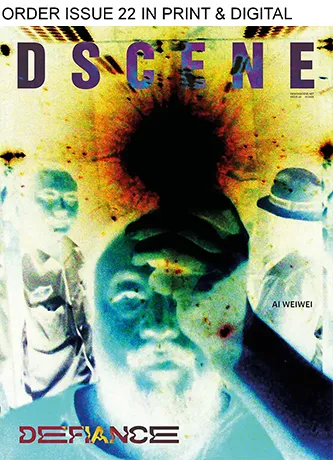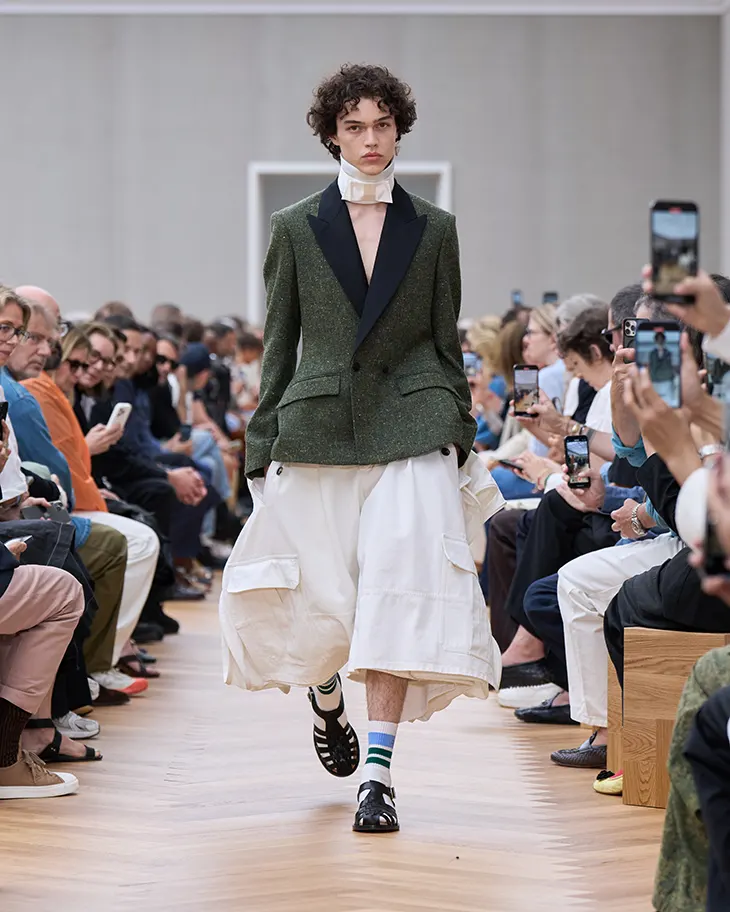
Jonathan Anderson’s first collection for Dior does not arrive with grand gestures. Instead, it takes the shape of a quiet disruption, set inside a velvet-lined gallery modeled after Berlin’s Gemäldegalerie, where two still lifes by Jean Siméon Chardin hang in measured conversation. That choice alone signals the tone of Summer 2026: thoughtful, self-aware, and driven less by spectacle than by a desire to reframe Dior’s legacy through empathy and imagination.
SPRING SUMMER 2026
Anderson reaches into Dior’s history without clinging to it. The Bar jacket, frock coats, 18th- and 19th-century waistcoats, Donegal tweeds, and regimental ties all return, but Anderson adjusts their context. These garments speak of tradition, but they’ve been nudged into contemporary relevance. Silhouettes move with ease. Construction never feels rigid. The result is a collection that recalls past rituals of dress while allowing for freedom in the present.
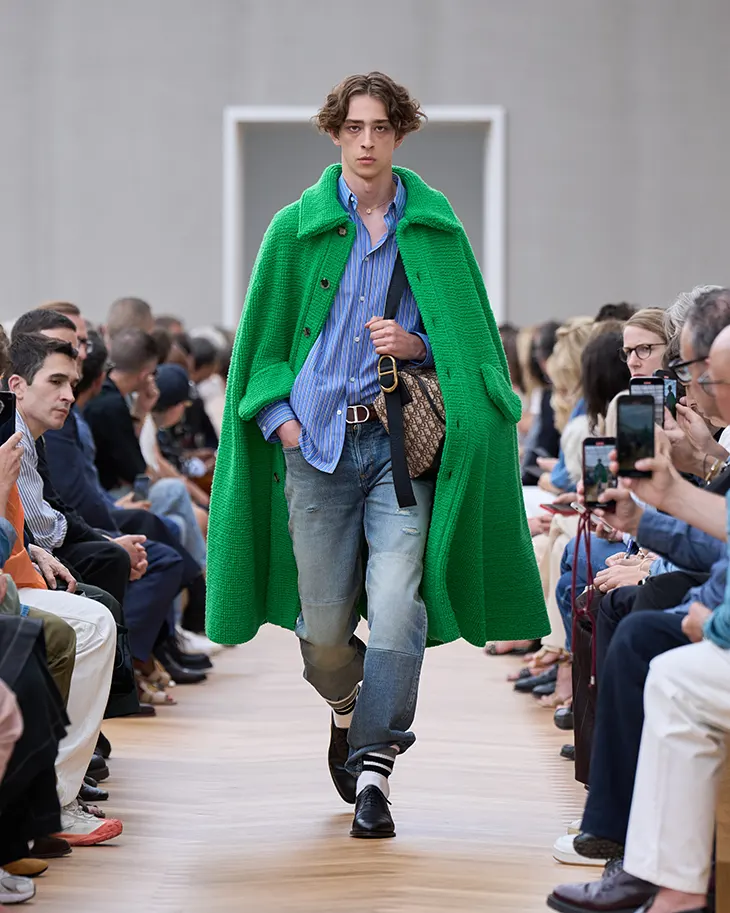
The references stretch beyond clothing. Anderson pulls literature into the fold with the Dior Book Tote printed with covers of Les Fleurs du Mal and In Cold Blood, while a Dracula crossbody bag introduces a darker note. These literary cues add texture. They suggest a wearer who reads, collects, and responds. The collection builds a quiet narrative through these cultural signals, placing meaning in details that might otherwise be overlooked.
Several pieces from the archive return, among them the Delft, Caprice, and La Cigale dresses. But Anderson has reshaped them. Construction has been rethought, silhouettes slightly twisted. Small details, embroidered roses, Diorette charms, reappear with new restraint. Each reference acknowledges Dior’s past without relying on it.
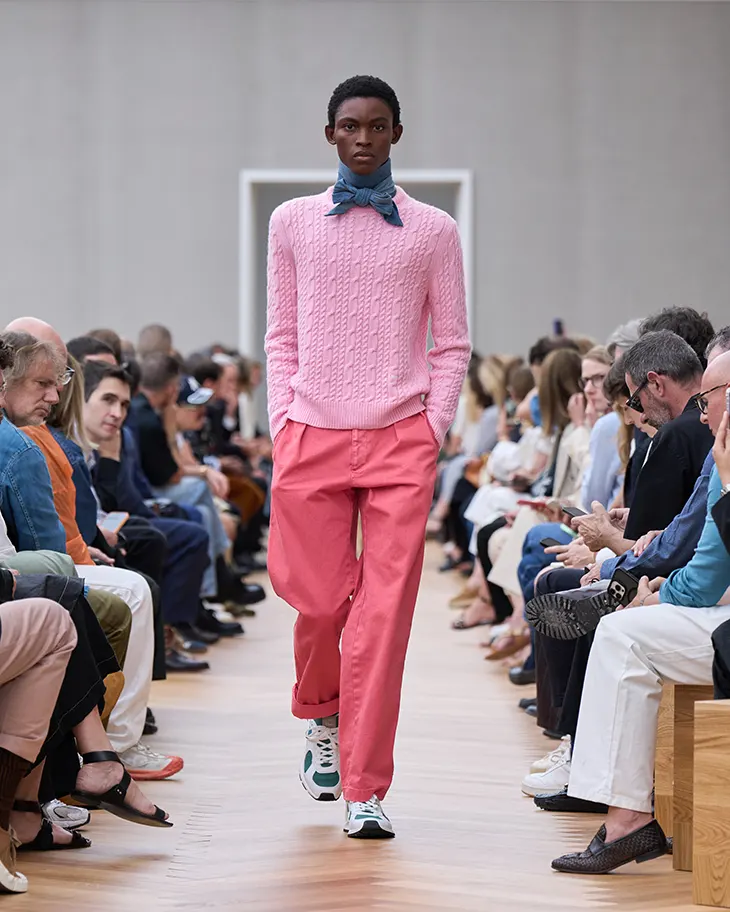
Accessories bring further dimension. Artist Sheila Hicks reimagines the Lady Dior bag with a surface of linen ponytails. The materiality is unexpected, the effect immediate. It offers tactility without polish, pushing the object into unfamiliar territory. In Anderson’s hands, luxury becomes less about finish and more about instinct.
There is structure here, but also a willingness to break it open. Anderson doesn’t present rules. He introduces possibilities. Dior, under his direction, becomes a space for invention. The aristocrat becomes a figure to reinterpret. Formality turns into a tool for play. The clothes suggest characters rather than types. They allow the wearer to shift between roles, to move with spontaneity rather than certainty.
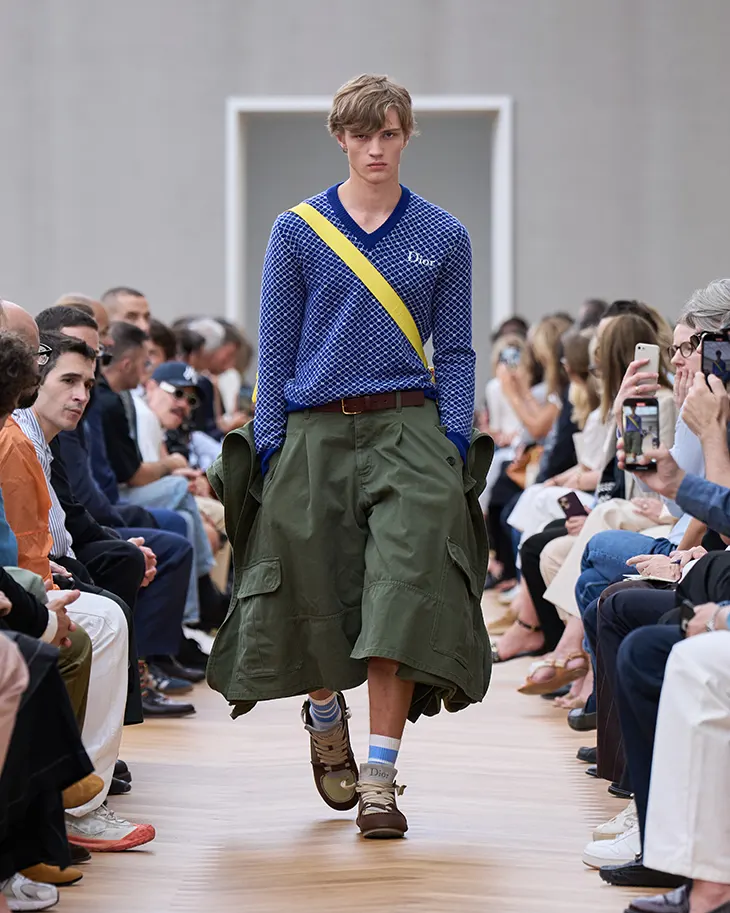
Anderson’s debut resists a singular arc. It unfolds with intention, allowing room for interpretation. Dior’s codes stay visible, stretched and reframed through a quieter lens. The collection speaks with clarity, measured and precise in its delivery.
